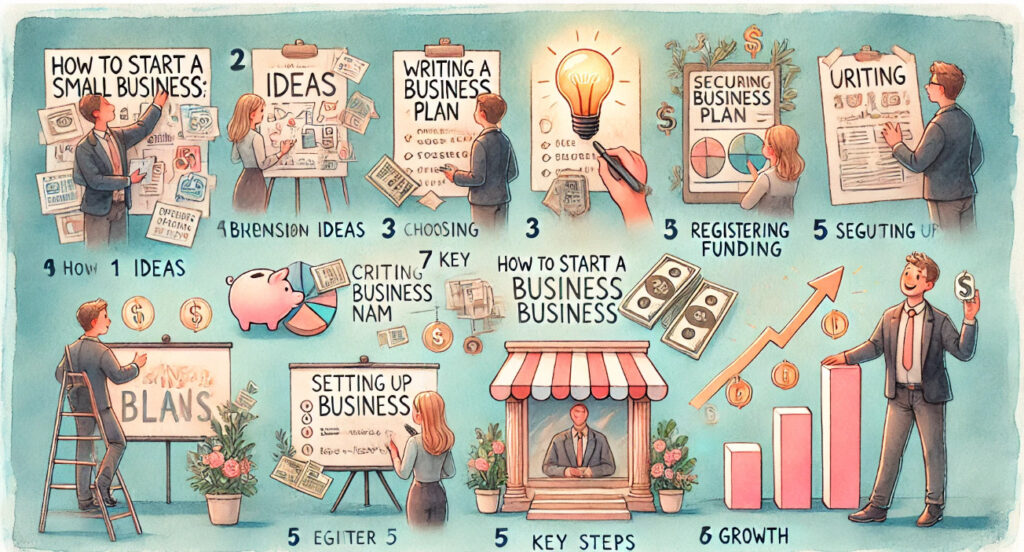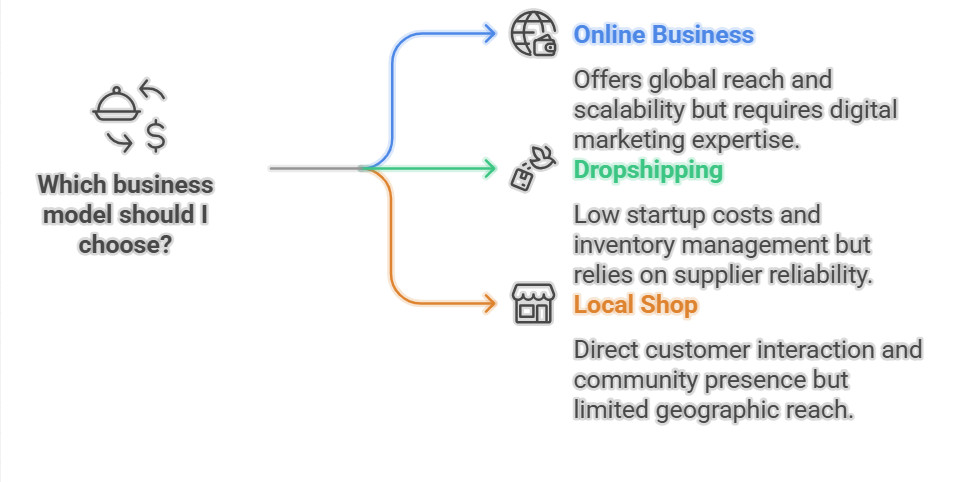How to Start a Small Business in 2025: A Simple Step-by-Step Guide
Starting your own business is one of the most exciting—and slightly terrifying—journeys you can take. Whether you dream of launching an online business, diving into dropshipping, or opening a local shop, the right steps can make all the difference between success and frustration.
The good news? You don’t need a fancy degree or millions in the bank to get started. With the right strategy, a bit of grit, and this simple guide, you’ll be well on your way to turning your business idea into reality.
Let’s break it down step by step.
How to Start a Small Business: 7 Key Steps
1. Find a Business Idea
Every great business starts with an idea. But not just any idea—one that solves a problem or fills a gap in the market.
- Passion vs. Profit: Do you want to turn a hobby into income, or are you chasing a high-demand niche? Both work, but research is key.
- For online businesses & dropshipping: Look for trending products (think sustainable goods, home office supplies, or tech accessories). Tools like Google Trends and Meta Audience Insights can help validate demand.
- For local shops: What’s missing in your community? A specialty grocery store? A boutique fitness studio?
Pro Tip: If you’re considering dropshipping, check out Shopify’s trending product guide for inspiration.

2. Write a Business Plan
A business plan isn’t just for investors—it’s your roadmap. Keep it simple but thorough:
- What’s your product/service?
- Who’s your target audience?
- How will you make money? (Pricing, costs, profit margins)
- Marketing strategy: Social media? SEO? Local ads?
Need a template? Shopify’s free business plan guide is a great starting point.
3. Register Your Business
Time to make it official!
- Choose a legal structure:
- Sole proprietorship (simple, but no liability protection)
- LLC (more protection, slightly more paperwork)
- Limited company (if you plan to scale big)
- Register your business name (check for trademarks!).
- Get necessary licenses (varies by location—Gov.uk has a handy guide for UK entrepreneurs).
4. Set Up Finances
Mixing personal and business finances is a recipe for disaster.
- Open a business bank account (many banks offer free startup accounts).
- Track expenses (tools like QuickBooks or Xero help).
- For online sales: Set up payment processors like Stripe or PayPal.
5. Build Your Brand
Your brand is how customers recognize and trust you.
- Logo & visuals: Use Canva or hire a designer on Fiverr.
- Website: Platforms like Wix or Shopify make it easy.
- Social media: Instagram and TikTok are gold for visual brands; LinkedIn works for B2B.
Dropshipping shortcut: Platforms like Oberlo (for Shopify) automate supplier connections.
6. Launch & Market
Don’t wait for “perfect”—launch, test, and improve.
- Start small: Offer a limited product range or soft-opening discounts.
- Digital marketing:
- SEO (get found on Google)
- Facebook/Instagram Ads (target your ideal customers)
- Email marketing (build a subscriber list early)
- Local businesses: Partner with nearby stores, host events, use flyers.
7. Scale & Improve
Once sales start rolling in:
- Listen to customer feedback (fix pain points).
- Reinvest profits (better marketing, inventory, tools).
- Automate tasks (outsource admin, use chatbots for customer service).

Online Business vs. Dropshipping vs. Local Shop: Key Comparisons
| Factor | Online Business | Dropshipping | Local Shop |
|---|---|---|---|
| Startup Cost | Low (100–100–500) | Very low (50–50–300) | High (5,000–5,000–50,000+) |
| Inventory Needed | Optional (digital products possible) | None (supplier ships) | Required (stock on-site) |
| Location Impact | Global reach | Global reach | Depends on foot traffic |
| Best For | Tech-savvy entrepreneurs | Beginners testing products | Community-focused sellers |
Final Thoughts: How to Start Your Own Business Successfully
Starting a business isn’t about having all the answers upfront—it’s about taking action, learning, and adapting.
- Online businesses offer flexibility and low overhead.
- Dropshipping is great for testing products without inventory risk.
- Local shops thrive on personal connections and community support.
Whichever path you choose, remember: Every big business started small.
FAQ: Starting a Small Business in 2025
How much money do I need to start a small business?
It depends! Online businesses and dropshipping can launch for as little as 50–50–500, while a local shop may require $5,000+ for rent, inventory, and permits. Start lean, test your idea, and reinvest profits to grow.
Do I need a business license to start?
Yes, in most cases. Sole proprietors may operate without one (check local laws), but LLCs and corporations require registration. For dropshipping or eCommerce, research tax rules in your target markets.
What’s the easiest business to start in 2025?
Dropshipping (no inventory) and digital services (freelancing, courses, consulting) have low barriers to entry. For hands-off income, consider print-on-demand or affiliate marketing.
How do I get customers for my new business?
- Online? Use SEO, social media ads, and email marketing.
- Dropshipping? Leverage TikTok/Instagram ads and influencer partnerships.
- Local? Network, host events, and use Google My Business.
How long does it take to make a profit?
Most businesses take 3–12 months to become profitable. Dropshipping can generate sales quickly, while brick-and-mortar may take longer due to overhead costs. Focus on consistency and customer retention!
